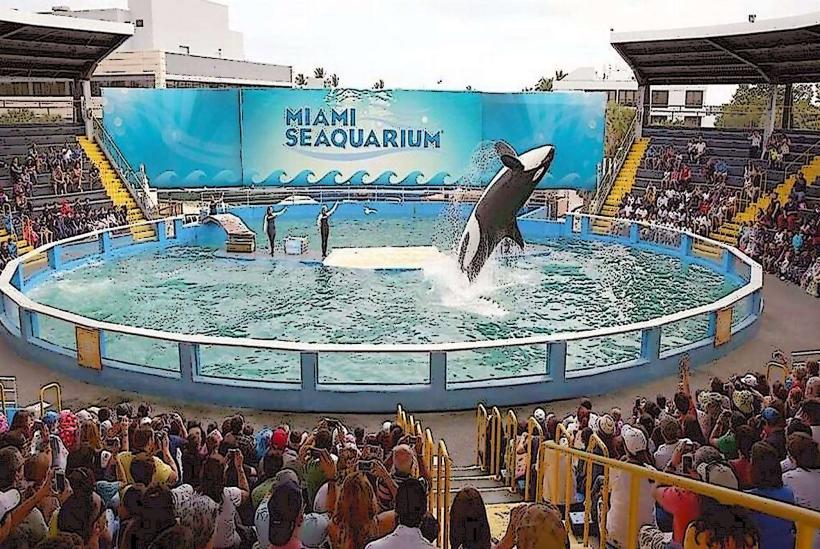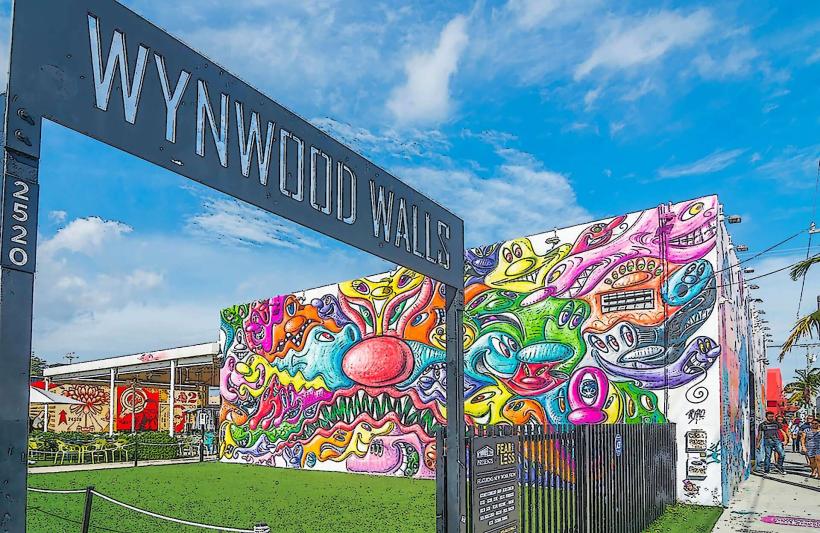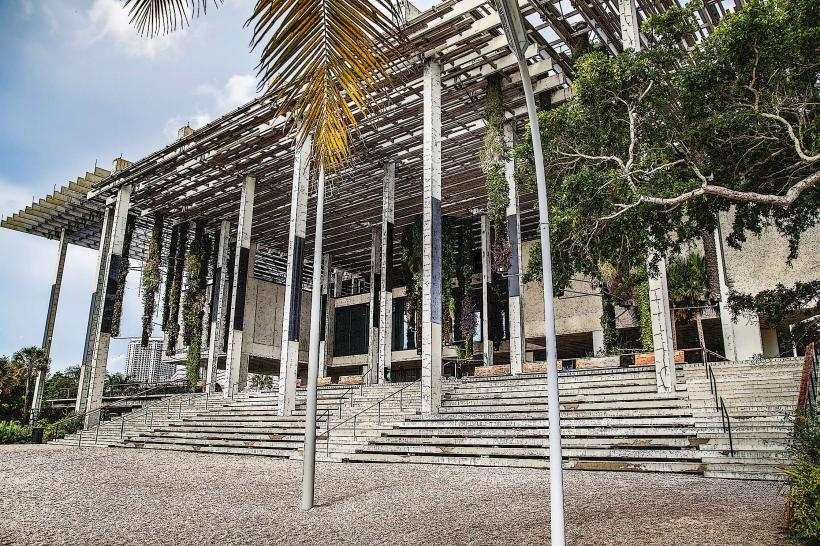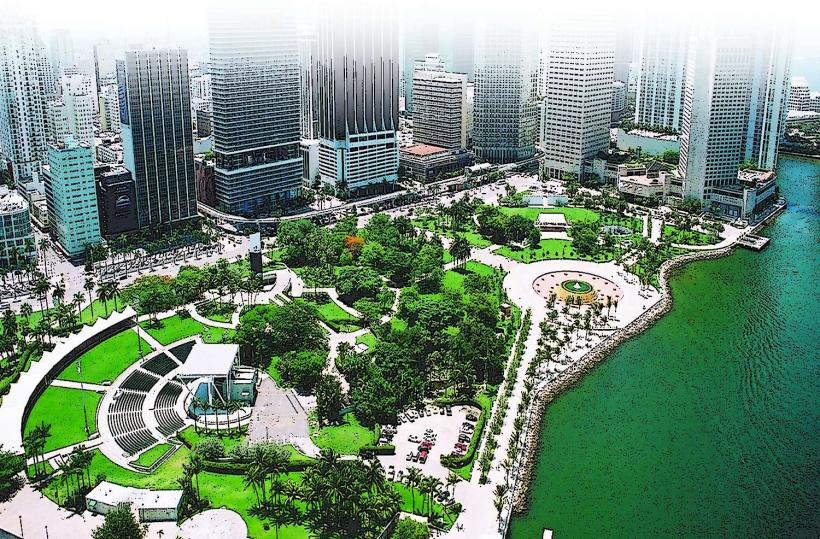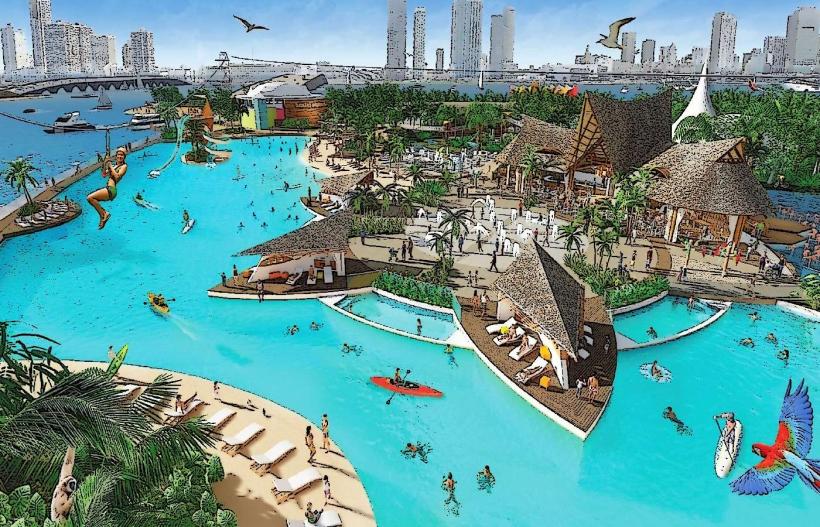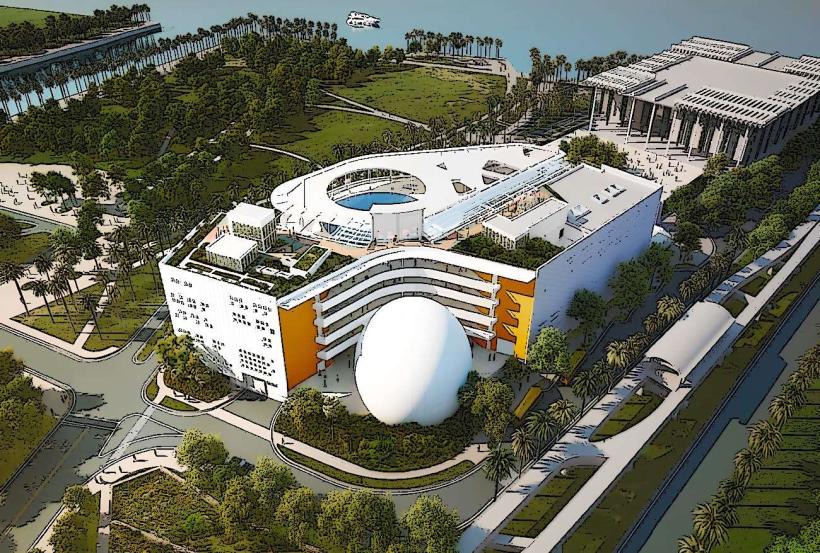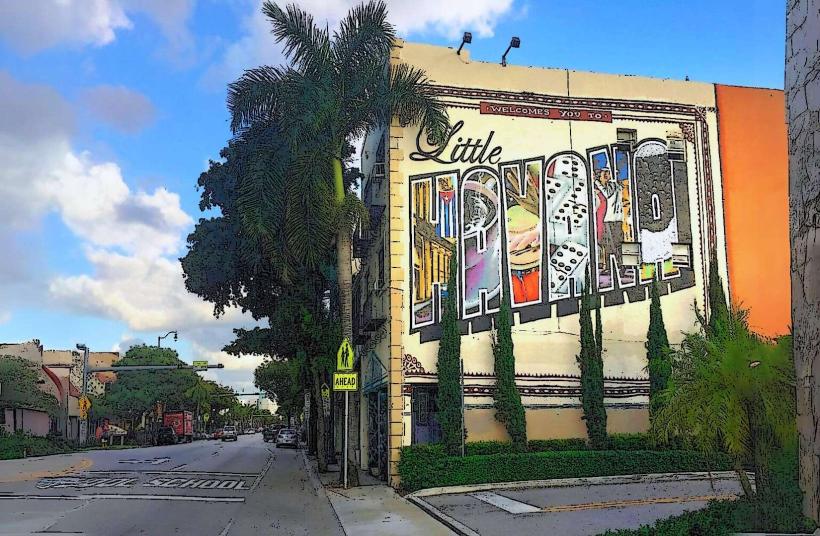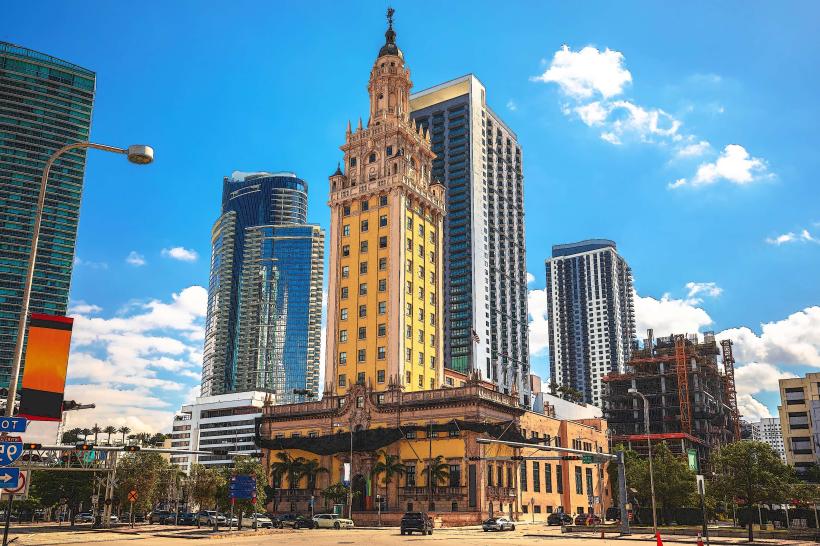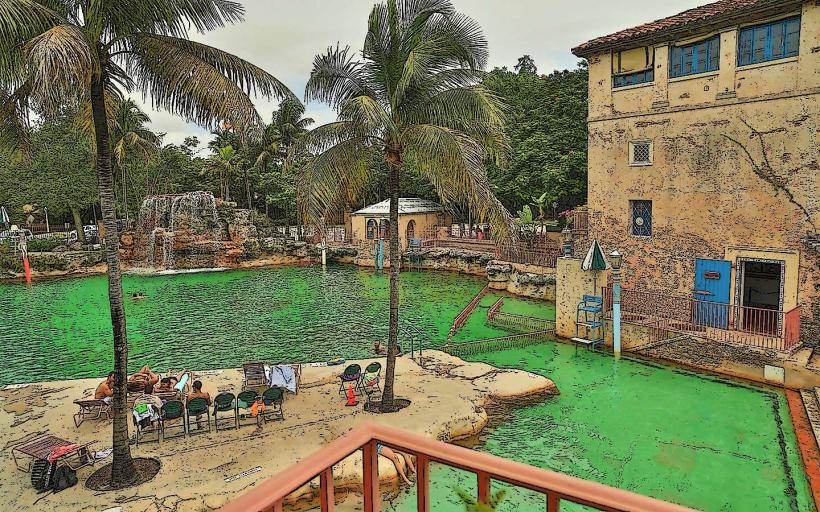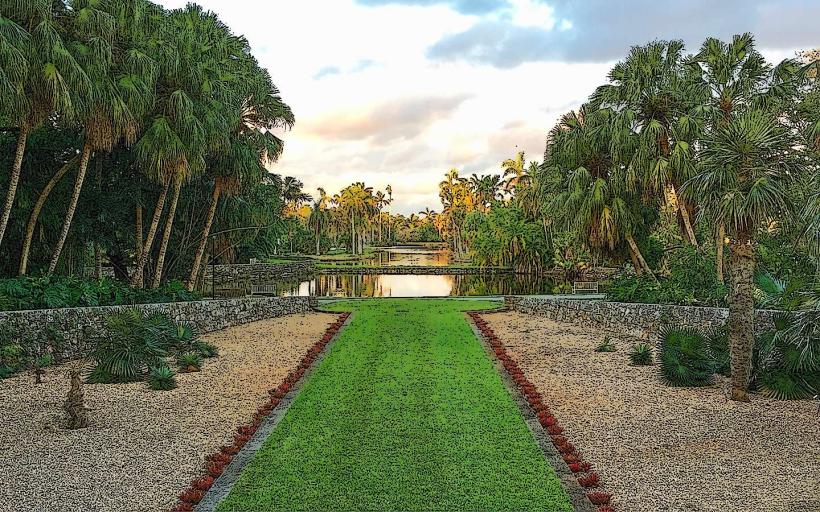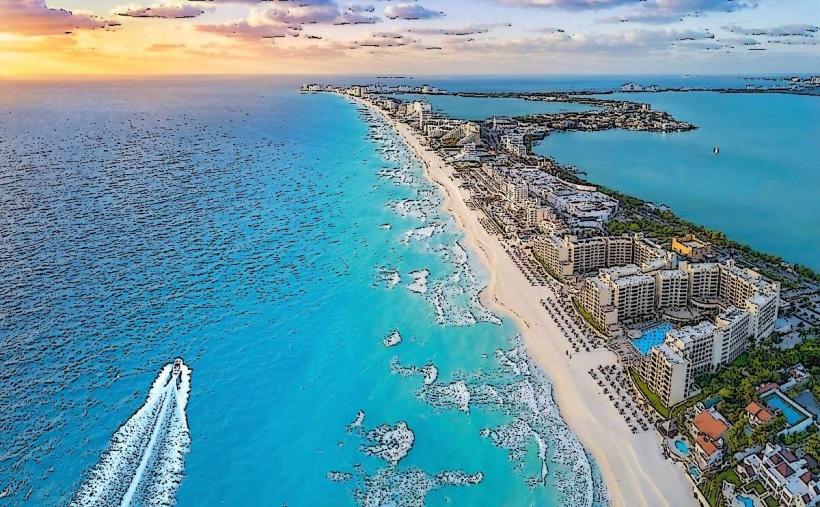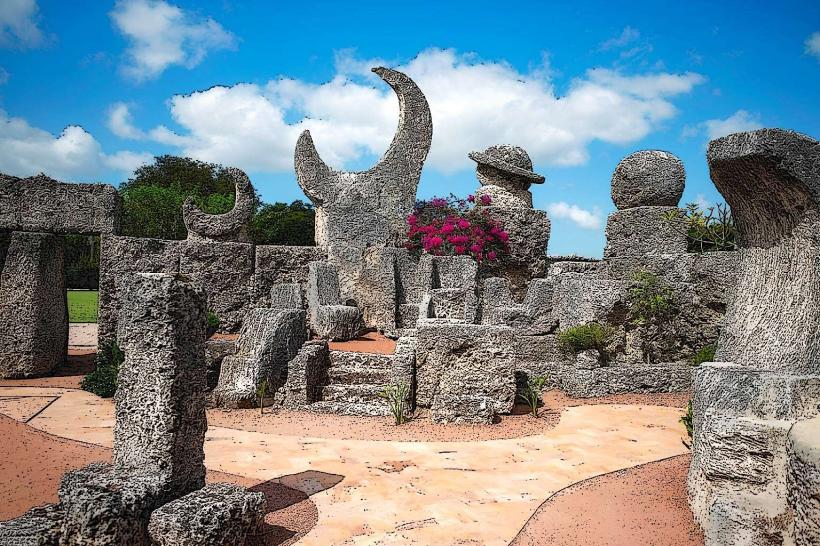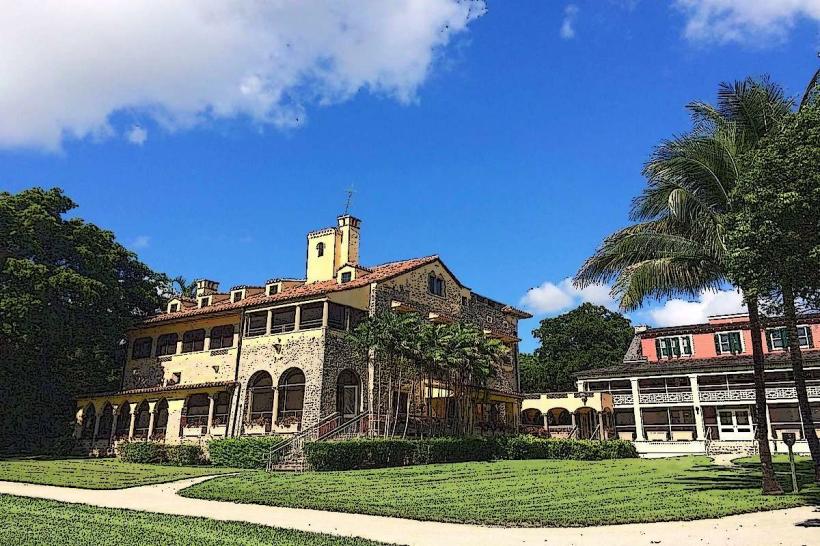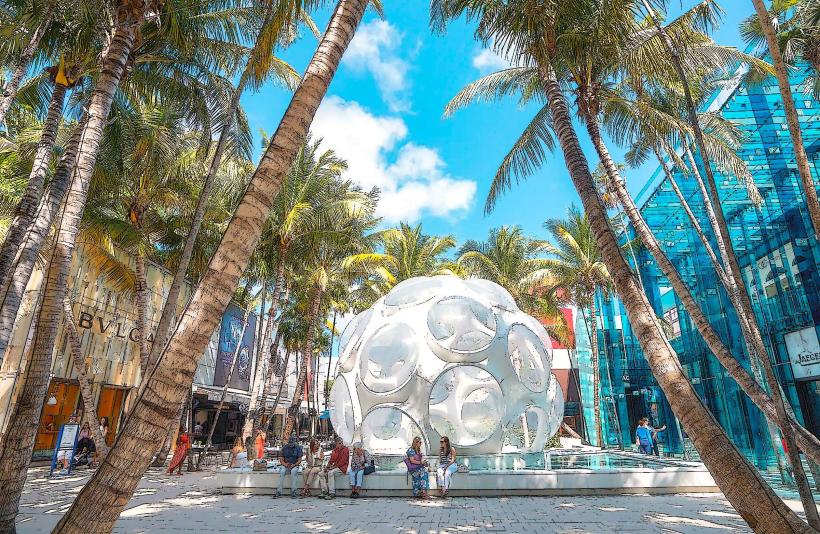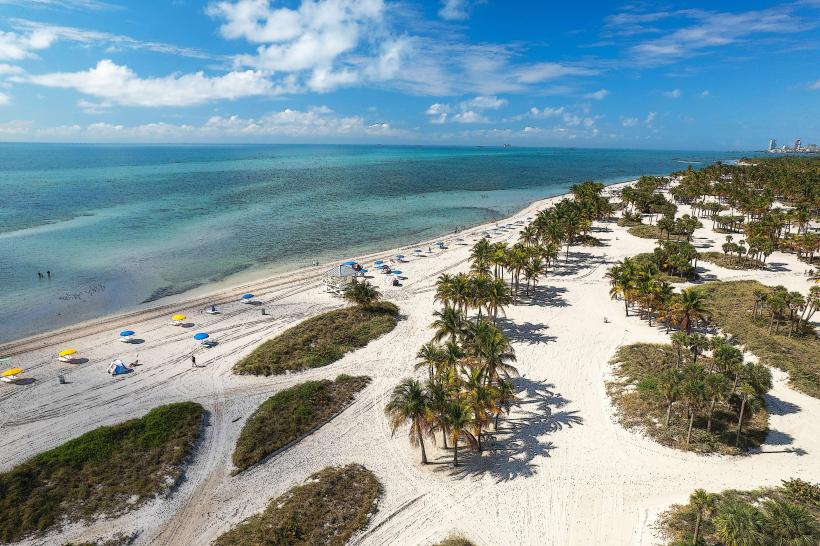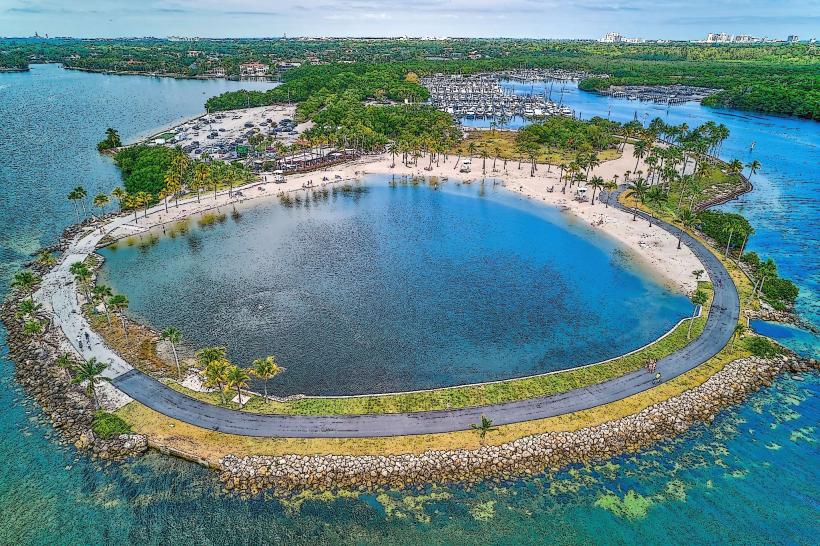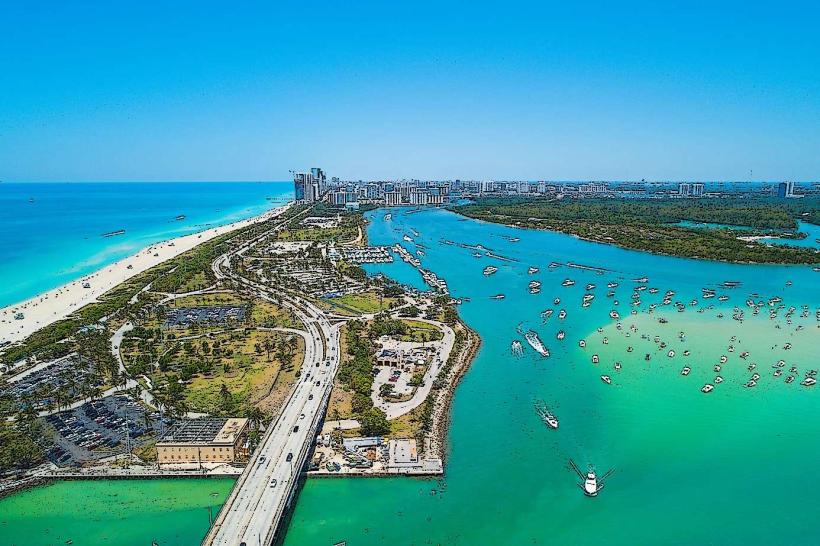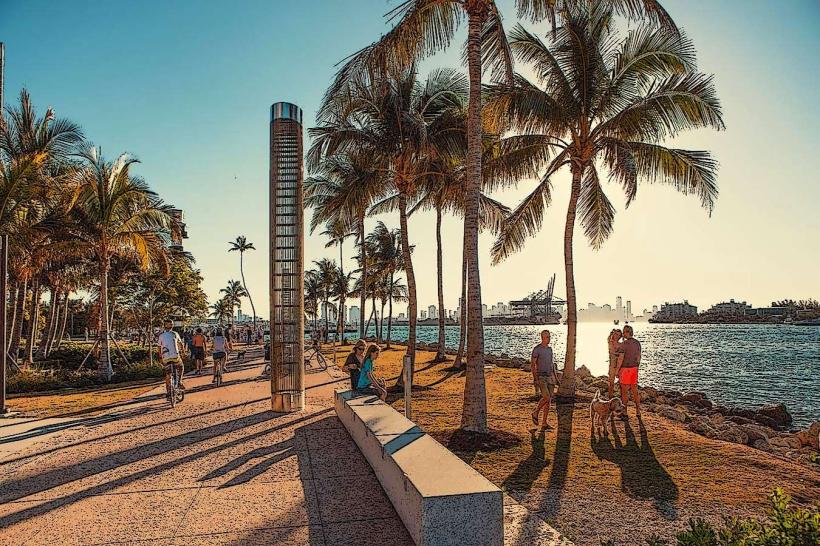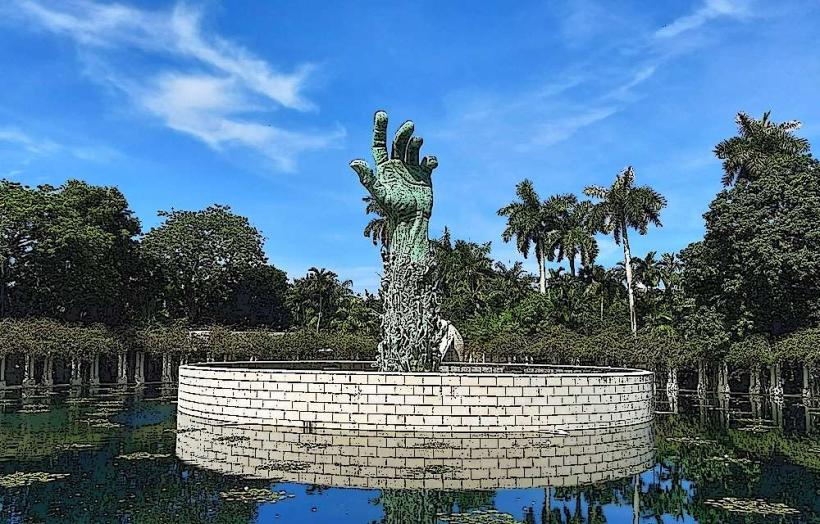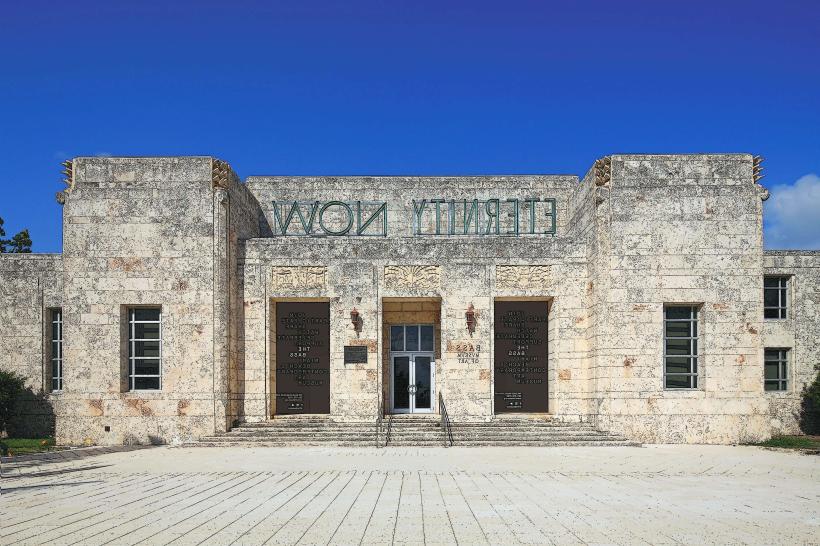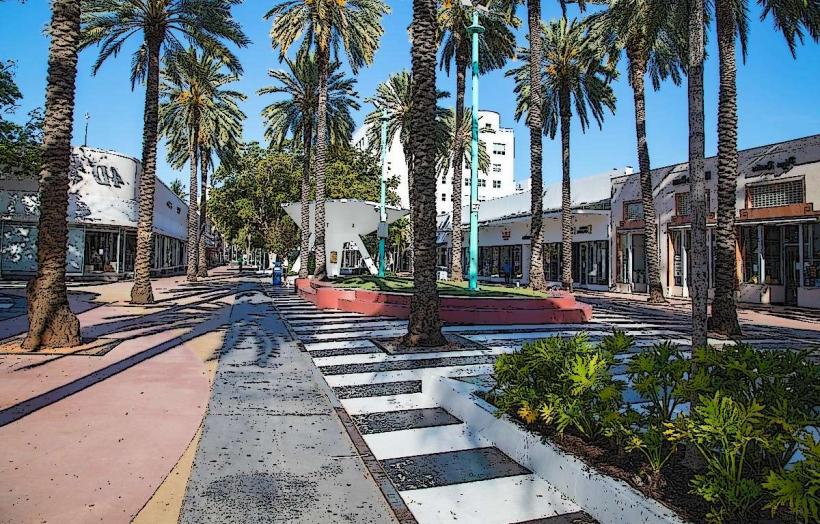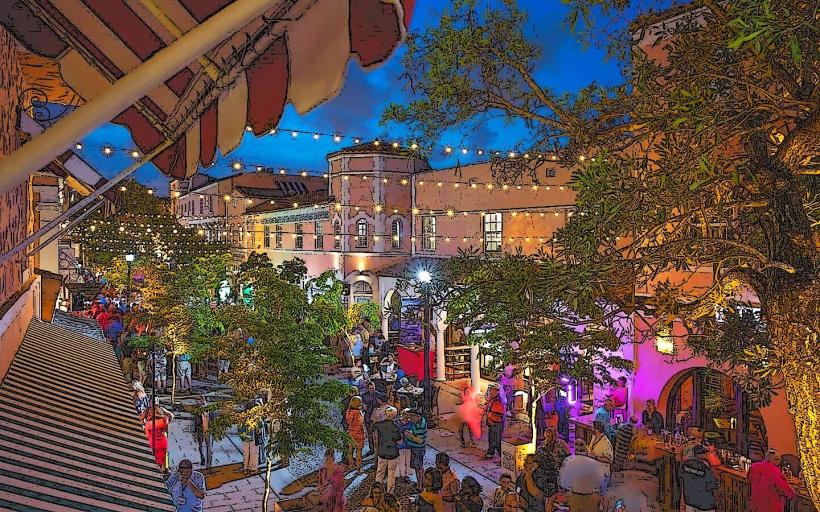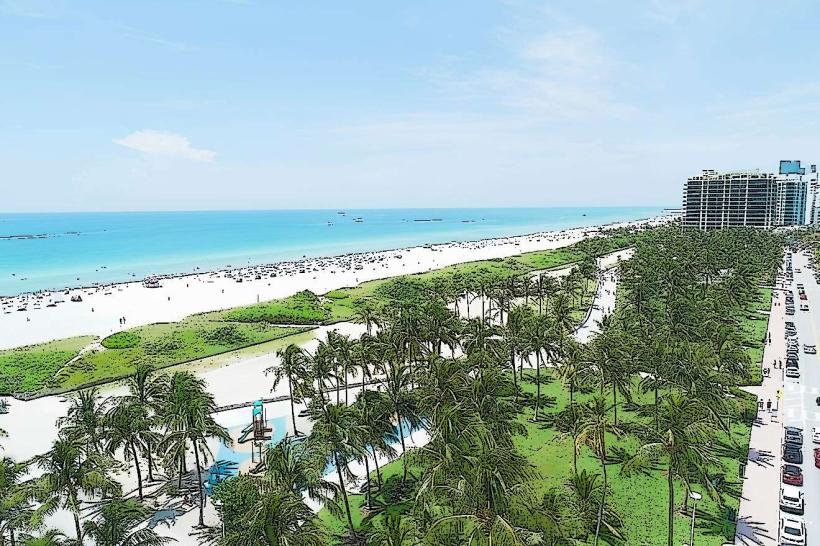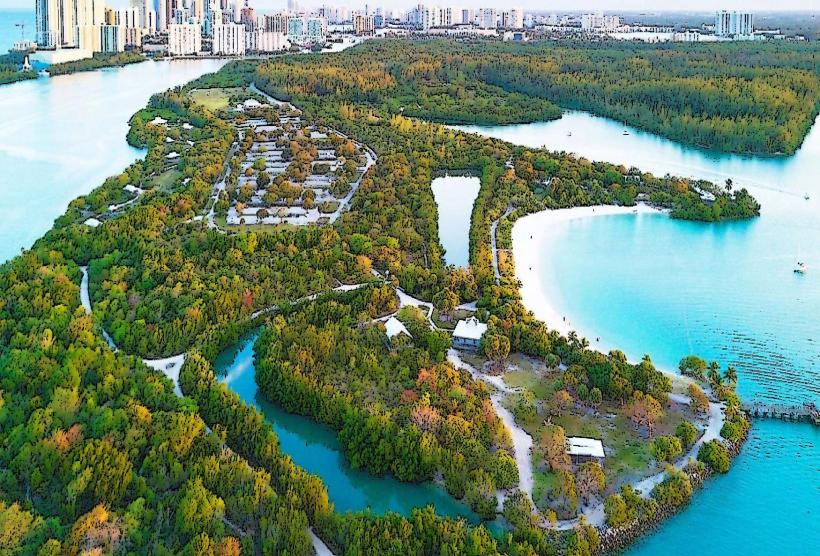Information
Landmark: Vizcaya Museum and GardensCity: Miami
Country: USA Florida
Continent: North America
Vizcaya Museum and Gardens, Miami, USA Florida, North America
The Vizcaya Museum and Gardens is one of Miami's most iconic cultural landmarks—a European-inspired villa set amid lush gardens on Biscayne Bay. Built in the early 20th century, it reflects the Gilded Age vision of leisure, elegance, and harmony with nature. Below is a detailed look at its history, design, features, and current role:
1. Historical Background
James Deering, a wealthy industrialist from Chicago and vice president of International Harvester, commissioned Vizcaya as his winter home. Construction began in 1914 and continued until about 1922.
Architect: F. Burrall Hoffman, Jr.
Designer (art and interiors): Paul Chalfin
Landscape Architect: Diego Suarez
Deering's vision was to create a retreat that blended European opulence with tropical beauty, styled like an Italian Renaissance villa but adapted to Florida’s subtropical environment.
He named the estate “Vizcaya” after the Spanish province of Biscay (Vizcaya in Spanish), reflecting the European inspiration behind the project.
2. Main House (Villa Vizcaya)
The main building is a Mediterranean Revival mansion designed to resemble a centuries-old Italian villa, but equipped with cutting-edge technology for its time, including:
A central vacuum-cleaning system
Modern plumbing
An early form of air conditioning
An intercom system
An elevator
The house has over 70 rooms, though only a selection is open to the public. Interiors feature an eclectic mix of:
European antiques and artworks from the 15th to 19th centuries
Decorative ceilings imported from European buildings
Tapestries, carved woodwork, Venetian chandeliers
Rooms styled in French Rococo, Neoclassical, Renaissance, and Baroque motifs
Notable rooms include:
The Courtyard: Once open-air, it’s now enclosed with a skylight and serves as the heart of the home
Music Room, Dining Room, and Reception Rooms: Lavishly decorated with European art and furnishings
The Library: Contains Deering’s collection of rare books and manuscripts
3. Gardens
Surrounding the house are formal European-style gardens covering about 10 acres, designed by Diego Suarez in the style of Italian Renaissance gardens but adapted for tropical flora. Key features include:
Fountain Garden: With imported European fountains
Maze Garden: A small hedge maze
The Secret Garden: Tucked away, shaded by trees and walls
Orchid Collection: Featuring rare tropical orchids
Sculptures and Grottos: Coral stone structures, urns, and statues scattered across the gardens
The design emphasizes symmetry, perspective, and controlled views—hallmarks of classical garden design.
Beyond the formal gardens lies a native hardwood hammock, preserving South Florida’s original forest landscape.
4. Vizcaya Village
Originally, this part of the estate housed service buildings, staff quarters, and agricultural facilities.
Located across the street from the Main House
Currently under restoration and development
Plans include a community center, café, and educational space
Designed to highlight the working side of the estate and the contributions of laborers, many of whom were Afro-Caribbean immigrants
5. Cultural and Educational Role
Since being acquired by Miami-Dade County in the 1950s, Vizcaya has served as:
A public museum: Opened in 1953
A center for education: Hosting over 5,000 students annually through its programs
A cultural venue: Hosting art shows, musical performances, and community events
It also holds:
Historical archives and conservation labs
Ongoing research projects on preservation and Miami history
Partnerships with local schools and universities
6. Events and Rentals
Vizcaya is a popular site for public and private events:
Weddings, galas, and corporate events
The White Party, a long-running LGBTQ+ fundraiser
Garden and Moonlight Tours
Seasonal events like Halloween and holiday-themed evenings
The estate is also frequently used for film and photography, owing to its dramatic architecture and scenic views.
7. Visiting Details (as of 2025)
Hours: Wednesday–Monday, 9:30 AM to 4:30 PM (gardens close at 5:30 PM)
Closed: Tuesdays, Thanksgiving, Christmas Day
Address: 3251 South Miami Avenue, Miami, FL 33129
Parking: On-site, free
Admission:
Adults (13+): $25
Children (6–12): $10
Children under 5: Free
Discounts for military, disabled visitors, and EBT cardholders
Amenities:
Café on site
Gift shop
Audio and self-guided tours available
8. Preservation and Challenges
Vizcaya faces ongoing challenges typical of waterfront historic sites:
Hurricane damage: Past storms have caused flooding and erosion
Climate change: Rising sea levels and humidity threaten the building’s foundation and artifacts
Conservation: Many original pieces require constant monitoring and maintenance
Despite this, Vizcaya remains a symbol of Miami’s cultural depth and historic wealth—balancing historic preservation with public accessibility.
In summary, Vizcaya Museum and Gardens is both an architectural gem and a cultural institution, offering a glimpse into the extravagance of America’s Gilded Age set within Miami’s unique tropical context.

